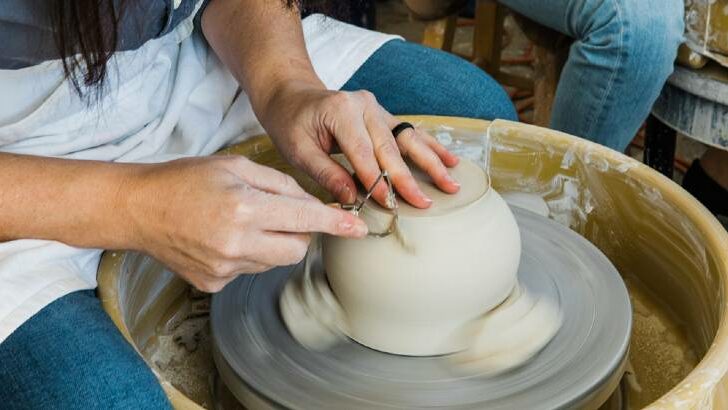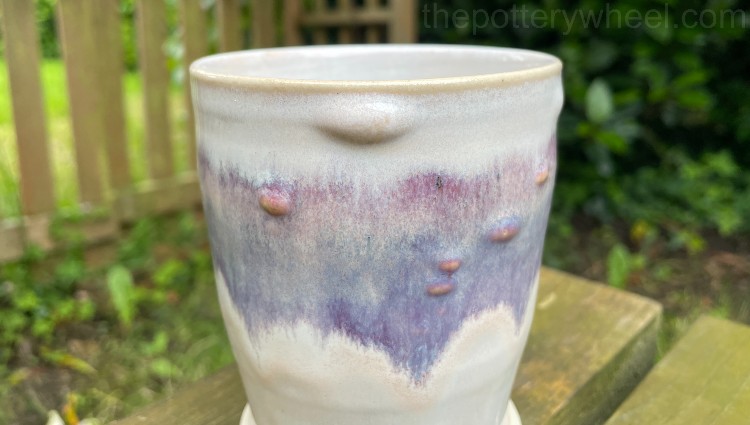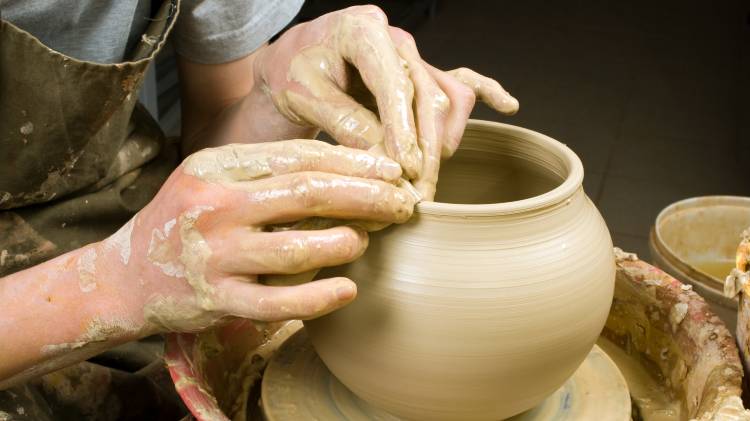One of the most common names used to refer to someone who makes pottery is the word ‘potter’. However, not everyone who makes pottery uses this particular word to describe themselves. There are a number of terms in use. So, what do you call someone who makes pottery?
There are a number of terms used to refer to people who make pottery. These include the commonly known term ‘potter’. But, other expressions include ceramic artist, ceramicist, ceramist, maker, crafts person, folk potter, or clay worker. Each of these has a slightly different meaning, but all can be used to refer to someone who makes things out of clay.
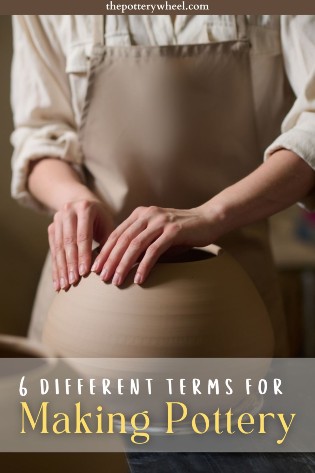
6 Different Names for Someone Who Makes Pottery
Let’s look at some of these terms to see which best fits each context.
1) Potter
It makes sense that a person who makes pottery would be called a potter. Much like a person who bakes bread is called a baker.
The origins of the word potter are quite ancient. In fact, the word comes from the late Old English word ‘pottere’. Old English was spoken from c.450 CE to about 1150. So, as a term, it’s been used for a long time. The use of the old English term ‘pottere’, was reinforced by the Old French word ‘potier’ (source).
Being a potter is often associated with making functional items out of clay. For example, the Cambridge University dictionary defined a potter as ‘a person who makes dishes, plates, and other objects from clay, usually by hand on a special wheel’ (source).
This raises an interesting point about pottery. It’s usually accepted that pottery is objects made from clay that have a particular utility or function. Some examples might be pots, mugs, cooking pots, and the like.
This contrasts with something like sculpture, where the item made out of clay is seen as a piece of art rather than having a practical function.
But, this gets us into hot territory because lots of potters feel that their work has artistic value in addition to its function. And some sculptures are functional too. So, as with most things, the issue isn’t clear-cut.
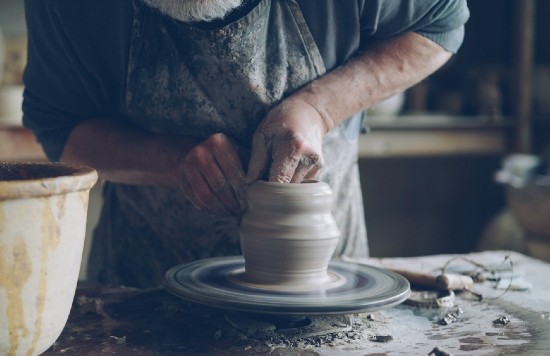
What is more, the term potter can be used in a number of ways. Here are some of the different ways that you might hear the word potter being used…
Different Uses of the Word Potter
- Production potter – A potter who works on a bigger scale producing larger quantities of pottery. Often producing large runs of similar items such as matching tableware. Production potters are sometimes called commercial potters.
- Studio potter – A potter who works in a studio either alone or in a small group. They produce smaller runs of pottery and focus on making unique pieces with an emphasis on artistry.
- Hobby potters – potters who make pots for pleasure without necessarily wanting to sell pieces.
As you can see, the word potter can be used in a number of different ways. And, some people who make pots from clay choose not to use the word potter to describe what they do. Let’s take a look at some of those other terms now…
2) Ceramic Artist
The term ceramic artist is a broad one. It can be used by artists who are making pieces out of clay that are objects of art. But it’s a term that is also used by people who make pottery, who think of their work in terms of its artistic value as well as its functional purpose.
Making pottery is a creative process and some pottery has a very high level of artistry. Some makers of pottery are happy to call themselves potters. Others feel that the term ceramic artist is a better reflection of the work that they are producing.
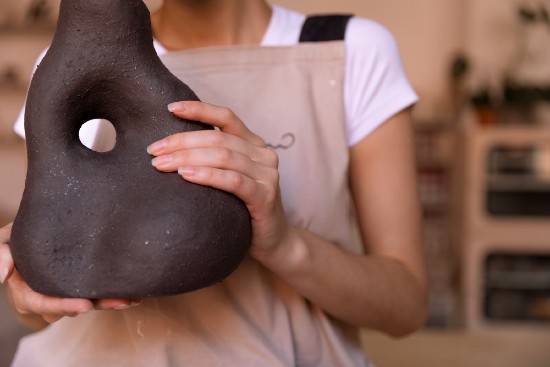
3) Ceramicist (Ceramist)
Another term that is sometimes used to refer to pottery makers is the expression ‘ceramicist’ or ‘ceramist’. This is often defined simply as ‘someone who makes ceramics’, which is pretty broad.
Working in ceramics includes making pottery, but it can also include other objects such as figurines or sculptures to name a couple of others. Nevertheless, some pottery makers prefer to use the term ceramicist. Perhaps to express something of the breadth of what they make.
‘Ceramicist’ is similar to ‘ceramic artist’. One difference is that people are less likely to understand what you do if you tell them you are a ceramicist! There is always a danger they will think you are making dental implants!
4) Maker
Some people who produce pottery refer to themselves as ‘makers’. This is a broader term that allows the maker to include different techniques and mediums in their creative process.
There is a long-standing debate about what art actually is, and whether a craft like pottery can be considered a form of art. This is a big debate and one that I won’t get into right here. The nice thing about the term maker is that it rises above the question of art versus craft.
I like the term maker because the emphasis is on creativity in all its forms. The term maker is a relatively modern one. There has recently been a surge in ‘Maker Culture’, which is an inclusive movement including all kinds of creative activity from textiles to woodwork (source).
5) Folk Potter / Crafts Person
In contrast to the relatively modern notion of being a maker, the term ‘Folk Potter’ has a much more historical feel.
People have been making pottery as far back as the Neolithic era, around 10,000 years ago. So, it has a very ancient tradition. The term ‘folk potter’ refers to artisans who made pottery in the 18th and 19th centuries.
Folk potters didn’t think of themselves as being artists. Instead, they considered themselves to be hard-working artisans much like blacksmiths and ironmongers, providing essential items for the community to thrive.
There is an interesting book about the folk potters of North Carolina called ‘Turners and Burners’ which chronicles this tradition.
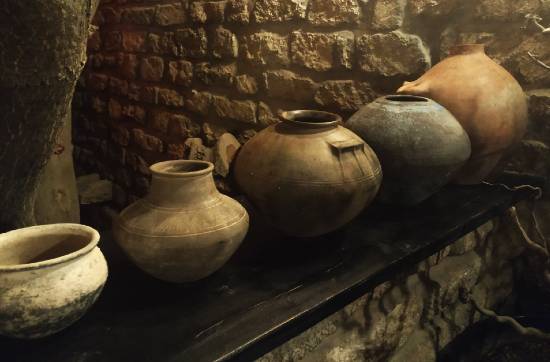
6) Clay Worker
The expression clay worker is also an older expression that isn’t used too often these days. Historically the term clay worker was a general term that was used to refer to someone who worked in a pottery factory. Clay workers would perform lots of different jobs preparing clay for pottery production.
However, there are some independent potters who refer to themselves as clay workers today.
The Pottery Production Process
Independent potters, whether they are studio, hobby, or production potters usually see the process of making pottery through from beginning to end.
But in pottery factories, there are sometimes teams of workers that focus on different aspects of the production process.
In a factory, you might have a ceramic designer, a person who is operating the machinery, whether it’s a ram press or slip casting. Then there might be a finisher and a glazer. Ceramic engineers and glaze technicians can be employed to focus on the chemistry of the pottery and glazes being produced.
Final Thoughts
An interesting thing about pottery is that two people might make similar objects, but one person calls themselves a potter, and the other calls themselves a ceramic artist. The pottery is the same, but the meaning we attach to the two different names is quite different.
Art is a funny world where what you call yourself and how you talk about what you do does affect how people see your work. So, if you’re someone who makes pottery, what you call yourself is worth some thought. But thinking about it is not half as enjoyable as doing it!

